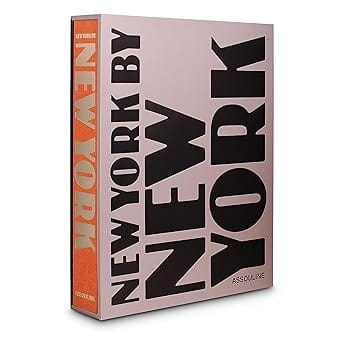- Non-ficton
- Non-ficton
- Contemporary Fiction
- Contemporary Fiction
- Children
- Children
- Comics & Graphic Novels
- Comics & Graphic Novels
- Non-Fiction
- Non-Fiction
- Fiction
- Fiction
No one is a Hindu; no one a Muslim. With these radical words Guru Nanak (1469-1539) founded the Sikh religion, calling for the recognition of one God, by whatever name devotees chose to call him, and the rejection of superstition, avarice, meaningless ritual, and social oppression. Meditation and devotion were identified as the work of the private domain and charity, honest work, and service to humanity as the obligation to the social domain. The goal of this catalogue, and the exhibition it documents, is to bring together and illuminate works of art that identify these core Sikh beliefs in the period of their early development by the ten historical Gurus (16th-17th centuries). Through them, we are taken behind the external signs that identify Sikhs, who constitute the world’s fifth largest organised religion, to its founding principles. The works of art, from the sixteenth through the nineteenth century, include paintings, drawings, textiles, and metalwork. They are drawn from museum collections in India and the United States and private collections in Canada, the United Kingdom, and the United States. The essay and object texts by B N Goswamy and Caron Smith provide keen insight into early Sikh devotion and examine the works of art in the context of the North Indian cultural mix in which they were created.
bout the Author
Mitchell Shelby Crites, an American art historian, has lived in India for thirty-five years. He is the personal friend of the owners of numerous heritage hotels. Ameeta Nanji has directed documentaries and collaborated with Crites on numerous exhibitions and design projects. Melba Levick is a widely published and exhibited photographer who works and lives in Paris, Los Angeles, and Spain. She is the photographer for Rizzoli’s California Mediterranean, Casa California, Estate Gardens of California, and many others.
About the Author
Caron Smith is Chief Curator and Deputy Director of the Rubin Museum of Art in New York.
9781890206048- Home
- Coffee Table Books
- I See No Stranger Early Sikh Art And Devotion
I See No Stranger Early Sikh Art And Devotion
SIZE GUIDE
- ISBN: 9781890206048
- Author: B N Goswamy
- Publisher: Rma
- Pages: 0
- Format: Paperback
Book Description
No one is a Hindu; no one a Muslim. With these radical words Guru Nanak (1469-1539) founded the Sikh religion, calling for the recognition of one God, by whatever name devotees chose to call him, and the rejection of superstition, avarice, meaningless ritual, and social oppression. Meditation and devotion were identified as the work of the private domain and charity, honest work, and service to humanity as the obligation to the social domain. The goal of this catalogue, and the exhibition it documents, is to bring together and illuminate works of art that identify these core Sikh beliefs in the period of their early development by the ten historical Gurus (16th-17th centuries). Through them, we are taken behind the external signs that identify Sikhs, who constitute the world’s fifth largest organised religion, to its founding principles. The works of art, from the sixteenth through the nineteenth century, include paintings, drawings, textiles, and metalwork. They are drawn from museum collections in India and the United States and private collections in Canada, the United Kingdom, and the United States. The essay and object texts by B N Goswamy and Caron Smith provide keen insight into early Sikh devotion and examine the works of art in the context of the North Indian cultural mix in which they were created.
bout the Author
Mitchell Shelby Crites, an American art historian, has lived in India for thirty-five years. He is the personal friend of the owners of numerous heritage hotels. Ameeta Nanji has directed documentaries and collaborated with Crites on numerous exhibitions and design projects. Melba Levick is a widely published and exhibited photographer who works and lives in Paris, Los Angeles, and Spain. She is the photographer for Rizzoli’s California Mediterranean, Casa California, Estate Gardens of California, and many others.
About the Author
Caron Smith is Chief Curator and Deputy Director of the Rubin Museum of Art in New York.
Related Books
User reviews
NEWSLETTER
Subscribe to get Email Updates!
Thanks for subscribing.
Your response has been recorded.

India's Iconic & Independent Book Store offering a vast selection of books across a variety of genres Since 1978.
"We Believe In The Power of Books" Our mission is to make books accessible to everyone, and to cultivate a culture of reading and learning. We strive to provide a wide range of books, from classic literature, sci-fi and fantasy, to graphic novels, biographies and self-help books, so that everyone can find something to read.
Whether you’re looking for your next great read, a gift for someone special, or just browsing, Midland is here to make your book-buying experience easy and enjoyable.
We are shipping pan India and across the world.
For Bulk Order / Corporate Gifting
 +91 9818282497 |
+91 9818282497 |  [email protected]
[email protected]
Click To Know More
QUICK LINKS
ADDRESS
Shop No.20, Aurobindo Palace Market, Near Church, New Delhi













![Southern Interiors A Celebration Of Personal Style [a Schumacher Interior Design Book] Southern Interiors A Celebration Of Personal Style [a Schumacher Interior Design Book]](https://www.midlandbookshop.com/s/607fe93d7eafcac1f2c73ea4/69172cffdaff851f93876aac/81i9kj7h4vl-_sy385_-480x480.jpg)
